The Snow Lake Trek is known as one of the most beautiful high-altitude trails in Pakistan. The Lake is actually a high-altitude glacial basian found at the convergence of the Biafo and Hispar glaciers. With a width of more than 16km, this area has the largest concentration of glacial ice outside of Antarctica.


Snow Lake starts on the K2 Basecamp Trek trail and finishes in Hispar on the Hunza side. The trek is quite remote, even more so than K2 Basecamp Trek with only a few trekking groups succesfully making the crossing each year. So remote in fact, that is one of the last regions in Pakistan where you might cross paths with Markhor, Ibex, Himalayan Bears and even Snow Leapords.
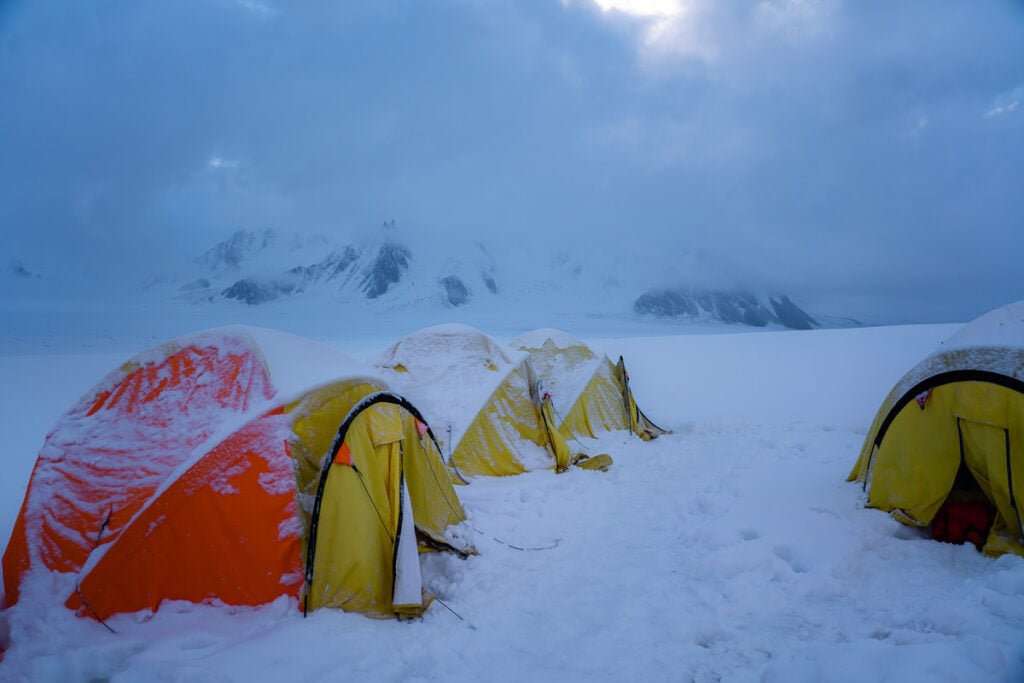
BEST TRAVEL COMPANY FOR PAKISTAN
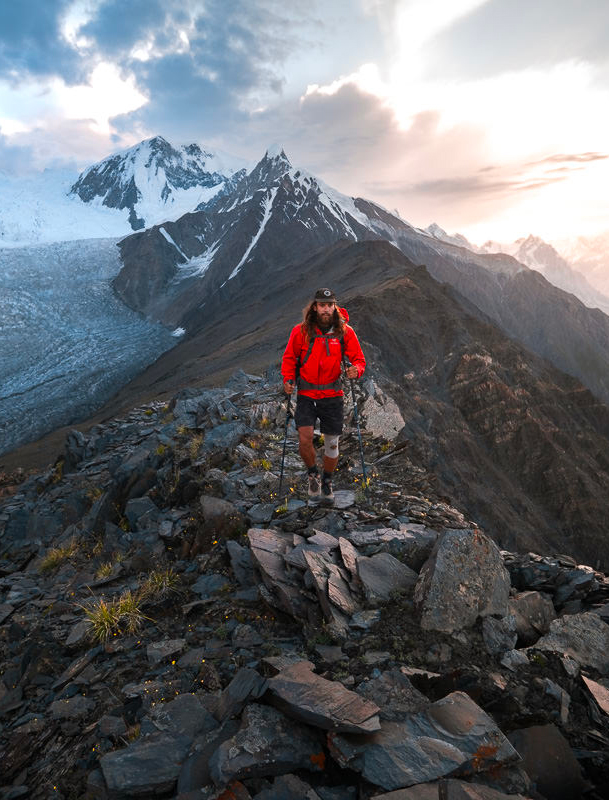
Interested in traveling to Pakistan or doing the K2 Base Camp Trek?
I recommend joining an Epic Expeditions trip for all things Pakistan adventure travel. Use code ‘JACKSON5’ when booking for a 5% discount.
SNOW LAKE TREKKING GUIDE
In this blog post, I will cover everything you need to know about the logistics of the Snow Lake Trek and also share with you my experience of the trek. This will give you an idea of what to expect and a great insight into the scenery you will find on each day of the trek. Before sharing my experience on the trek in the second section of this blog post, I will detail all of the information you need to know in this complete guide about the Snow Lake Trek.


SNOW LAKE TREK DETAILS
While trekking through the Karakoram Mountain Range towards K2 Basecamp, you can expect harsh camping weather conditions such as snowstorms or days on end of the exposed sun. The rocky, glacial terrain makes this a tough trek but also provides some of the most incredible trekking views in the world. Unlike the popular Everest Base Camp trek, which is visited by more than 100,000 trekkers annually, the K2 Basecamp Trek sees just over 1000 visitors a year making it a brilliant alternative for adventure-seekers.
- Distance: 120 km through-hike
- Days required: 12-14 days
- Total Incline: ( with undulation) – 4,000 m
- The highest point on the trek: 5,200m
- Difficulty: This trek was much harder than Everest Base Camp Trek as it was more remote, tougher terrain, and less commercialized. One of the major differences is that you will be camping every night rather than in tea houses. Also, the terrain is along a rocky, icy glacier making it much more difficult to cover distances rather than a path that leads you to Everest Base Camp. Having said that, there was nothing technical involved to cross the Hispar La although there were many crevasses we needed to avoid. The acclimatization profile was very good as you have seven days to reach the highest point on the Hispar La
- Permits: Your tour operator will take care of these. It isn’t possible to hike independently and you must book with a guide and a registered tour operator.
- Guide: A guide is required on this trek and the guide manages all of the logistics, distances, directions, and camping sites. The directions weren’t always very clear like on the Everest Base Camp trek and having the guide manage all of the logistics was great.
- Accommodation: Each night you will camp at an incredibly scenic campsite with views of 7000m peaks visible. Trust me you will be entranced just while looking out of your tent window.


BOOKING A TOUR FOR K2 BASECAMP TREK
The Snow Lake Trek does require a guide. I did the trek with Epic Expeditions, which is one of the top trekking companies in Pakistan. The owner, Chris, has explored all over Pakistan and is joined by an experienced Pakistani team of cooks, porters, and guides.
The trek costs approximately $4200 USD with Epic Expeditions as of 2022 and includes all transfers, accommodation, meals, drinks, and permits. The itinerary is 21 days even though the trek is just 14 days, which is to allow for domestic travel on either side of the trek and any potential delays with domestic flights or road conditions/landslides. I honestly had a great time and can wholeheartedly recommend Epic Expeditions.



INSURANCE FOR THE SNOW LAKE TREK
Pakistan is a precarious place for climbing or hiking because the availability of helicopter rescue is almost non-existent. Compared to places like Nepal, helicopter rescue requires prior organization and deposits of $5000+ by your trekking or climbing company. There is a solution though.
Need extra protection?
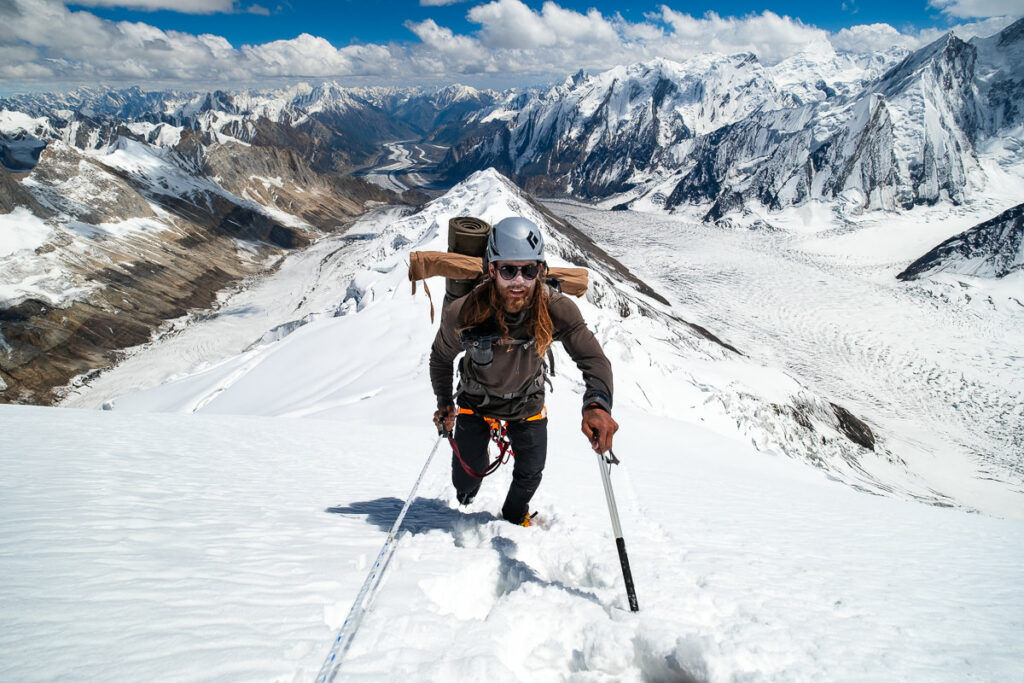
Regular travel insurance is great but won’t cover you for high altitude hikes or for helicopter evacuation. Each year, I purchase a Global Rescue Subscription.
For less than $500 per year or $100 per expedition, you can purchase a Global Rescue subscription and be covered no matter how extreme the hike or how high the climb is.

TREKKING TO SNOW LAKE: WIFI/ELECTRICITY AVAILABILITY
Wifi: There is no WiFi on this trek although some operators may provide a satellite connection. Most will not offer WiFi.
Electricity: Our team had a generator, which was carried by a mule. Each night, one jug of gasoline would be used for the generator so we could charge cameras, phones, headlamps, power banks, and even drone batteries for a few hours each night. This seems to be standard practice among tour operators but you will need to check if it is available. I also took a small solar panel, which worked well to charge my phone and power bank each day.

PEAKS YOU CAN VIEW ALONG THE TREK
Along the Snow Lake Trek, there are a number of high peaks to observe. Peaks you might find along the way include, Distaghil Sar (7,885 m) Kanjut Sar (7,760m), and Makrong Chhish (6,607m). There is the Latok group (Latok I: 7,145m, Latok II: 7,108 m, Latok III: 6,949m, Latok IV: 6,456m) and Baintha Brakk/The Ogre (7,285m).

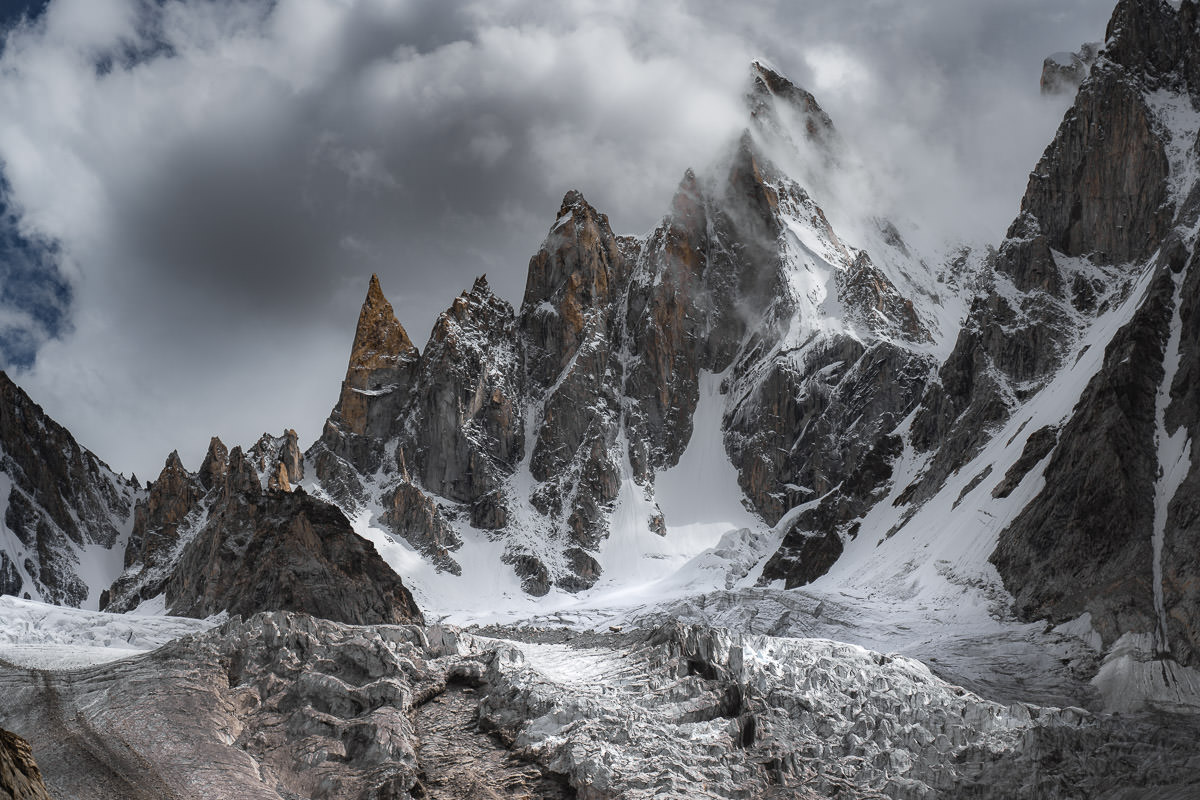
SNOW LAKE TREK ITINERARY
- SKARDU TO ASKOLI (3,000m) 7 HOURS DRIVE
- TREK TO NAMLA,(3,566m) 6-7 HOURS WALK
- TREK TO MANGO,(3,720m) 5-6 HOURS WALK
- TREK TO BIANTHA (4,035m) 5-6 HOURS WALK
- REST & ACCLIMATISATION DAY
- TREK TO MARFOGORO (4,300m) 6 HOURS WALKING
- TREK TO KARPHOGORO (4,680m) 6 HOURS WALK
- TREK TO HISPAR LA BASE CAMP,(4,590m) 6 HOURS WALK
- TREK TO HISPAR LA BY CROSSING SNOW LAKE, (5150m) 6 HOURS WALK
- CROSS SNOW LAKE AND TREK TO KANI BASA, (4,510m) 4 HOURS WALK
- TREK TO BAKHTUR BAIG (4,470m) 6 HOURS WALK
- TREK TO SHIGHAM BARIS (4,170m) 7 HOURS WALK
- TREK TO BITENMAL, (3,760m) 6 HOURS WALK
- TREK TO HISPAR VILLAGE, (2,300m) 4 HOURS WALK

MY EXPERIENCE ON THE SNOW LAKE TREK
Over the last couple of years, I had heard from many other hikers that the Snow Lake trek was the most scenic route in Pakistan. It was also known to be much more remote than the more commercialized routes in Pakistan and was often difficult to accomplish due to conditions and crevasses. It sounded like a challenge worth attempting and something a little more off the beaten path than other hikes in Pakistan. So, we rallied a group together and set off to cross the Hispar La on the Snow Lake Trek.
After a couple of days in Skardu, we set off in the Jeeps to Askole to camp for the night before starting our trek the next day. We knew we were in for a long journey, but nothing would prepare us for the adventure to come.

The first couple of days are the toughest on most treks in the Karakoram. The combination of extreme heat and rocky terrain make the progress slow and arduos. Heat stroke hits many newcomers to the region and the remoteness of the region quickly becomes apparent.
Our route begins on the same path as the K2 Basecamp Trek from Askole, but quickly diverges onto the Biafo Glacier. We will follow the glacier all the way up until Snow Lake over the next week. It undulates along dusty paths and rocky mounds with hardly a slither of shade for respite. The scenery is beauitful but these first few days are about survival and saving energy.







Our first few days on the Snow Lake Trek went to plan. We had no injuries, some members with mild heat stroke and the entire team was upbeat and ready to march on. We made it out of the rocky glacier to Biantha Camp. Having grass beneath our feet was a great feeling after the hot, rocky terrain we had been enduring til that point. Having now reached almost 4000m, it was time for a rest day. Here we set up camp and proceeded to play cards, eat well and rest the bodied before the next phase of the expedition.
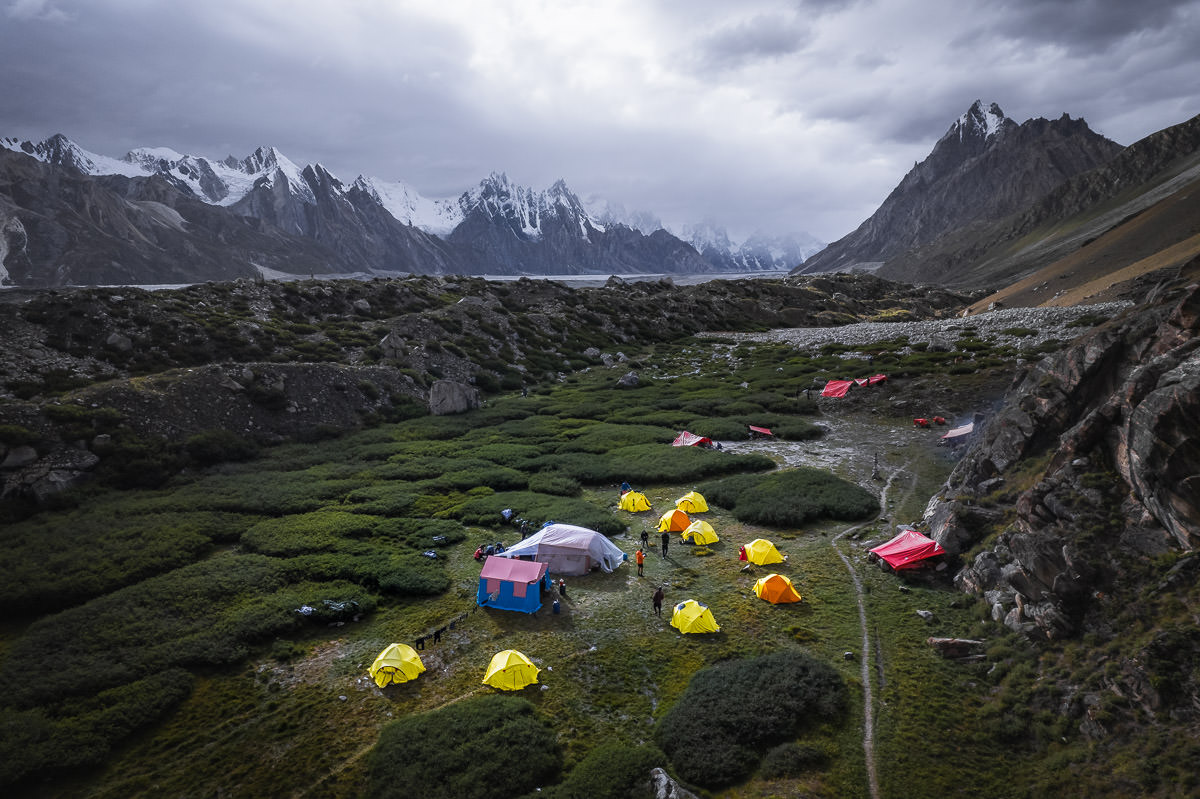
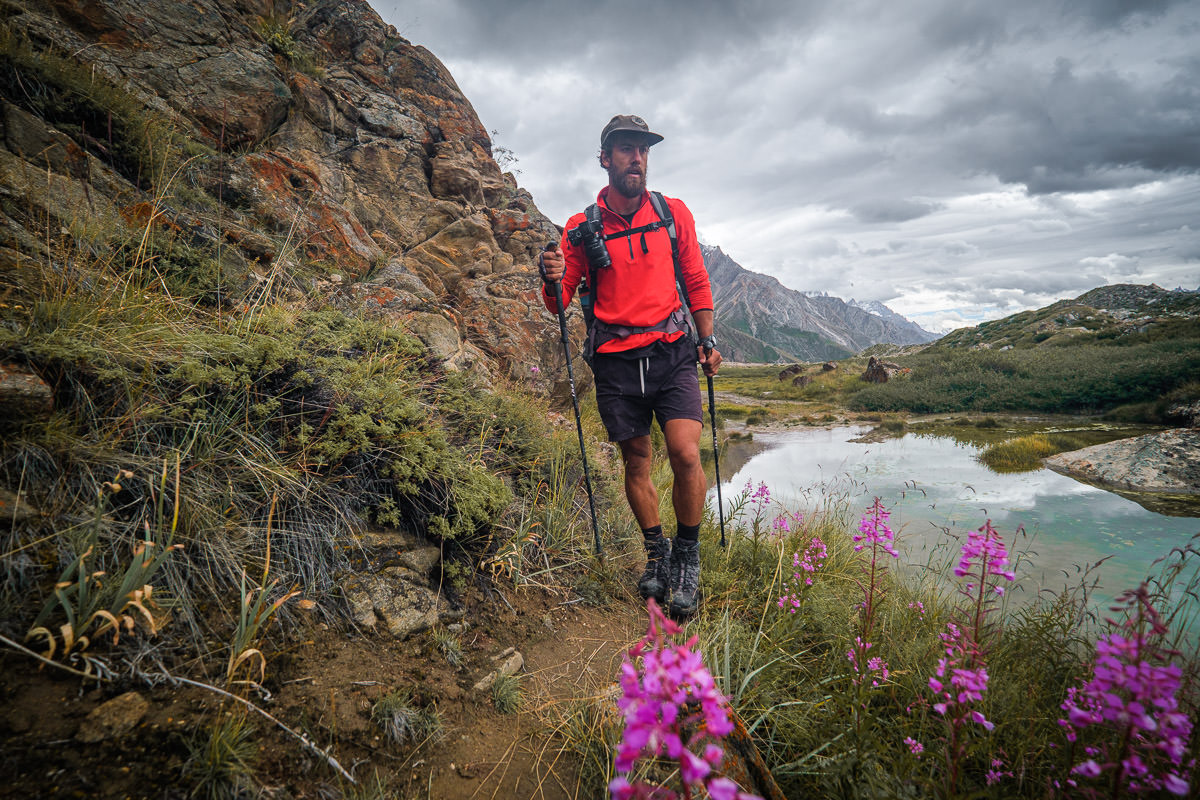
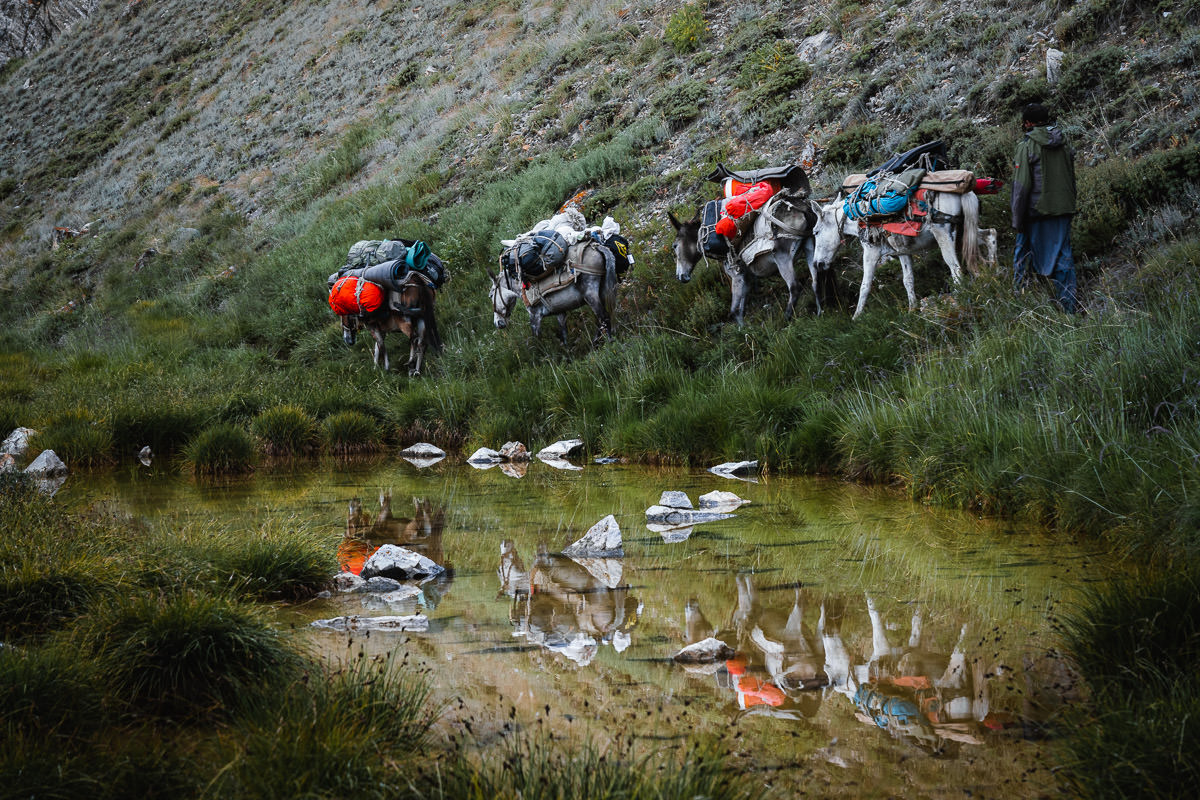





The next phase of our journey was the easiest. The weather had now cooled and we no longer melted while trekking. The terrain had leveled out ever so slightly to be less rocky and we encoutnered flat, icy glacier from time to time. We didn’t see any green grass after leaving Biantha but the scenery and peaks began to grow in stature and become more immense.
The remoteness of our surroundings became apparent for two reasons. Firstly, the vast glacier dwarfed our team. Like ants, we marched across the expanse towards Snow Lake. 6000m and 7000m peaks began to appear when the clouds offered a break. We were now several days from help in both directions and a sense of vulnerability swept over the team although this added to the adventurous nature of the joruney.
However, the second reminder of our remoteness was the sad news that a French trekker had suffered severe illness up at a higher altitude than us. With no radio, Garmin or chance of heli-evacuation, he had passed away on the glacier as his team tried to carry him down. They had waited three days to dry and descend. We passed by the body, which lay wrapped in a sleeping bag on the glacier. It was a sad moment on our trip and a reminder that we were visitors here in a harsh and merciless environment.










We made it through to Kharfogoro, a rocky outcrop that would be our temporary home. Setting up camp was tough, as there were limited capsites despite us being the only team on the trek. We would have to get comfortable however, as bad weather set in and we ended up spending three nights here.
Kharfogoro became a pivotal point in our journey. We discovered that this is the location where many groups turn around. Porter managers and staff of many teams try and make the case of bad conditions and insufficent gear of the porters. They want to go back to Askole and deem it unsafe to push on. We had to have some big conversations about safety, responsibility and fulfilment of what we set out to do. Ultimately we managed to get everyone on board and motivated to attempt to cross the Hispar La. We assured our porter team we would break trail and lead the way while roped up.
From Kharfogoro, we had a 10km journey, hopping over crevasse fields, to reach Snow Lake Camp. The trek name can be deceptive. There are no lakes just a lot of snow. Reaching the camp was a great relief as it was right beneath the path. Arriving here to our mini village meant that we would be indeed continuing on rather than turning back to Askole.
Our campsite was an isolated collection of tents in the middle of a massive snowfield. Quite a sight from above.



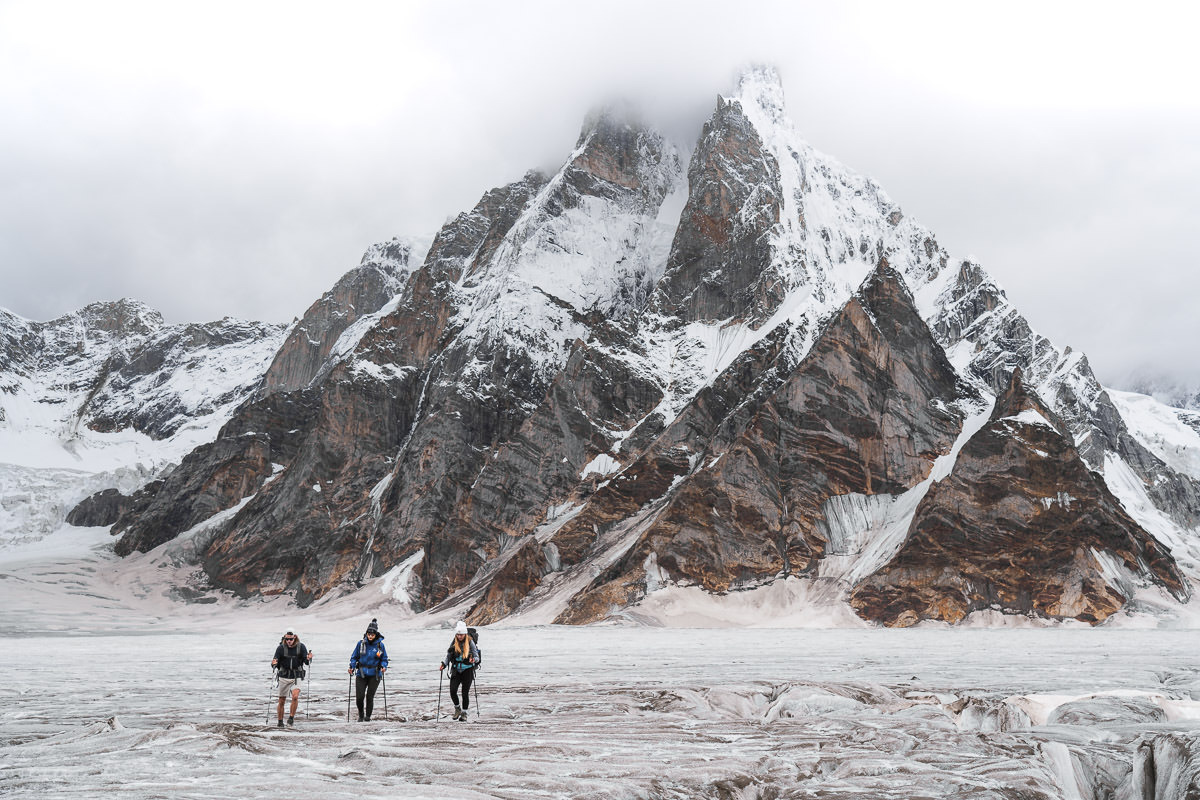



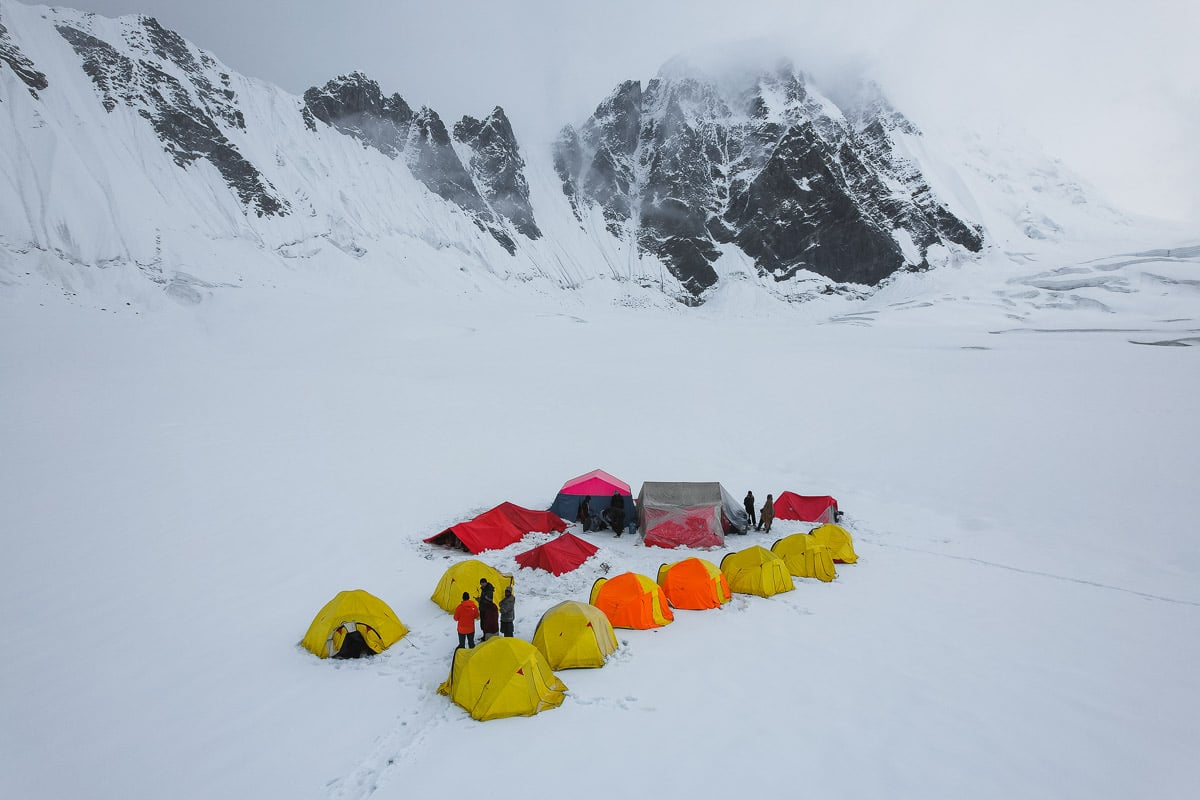
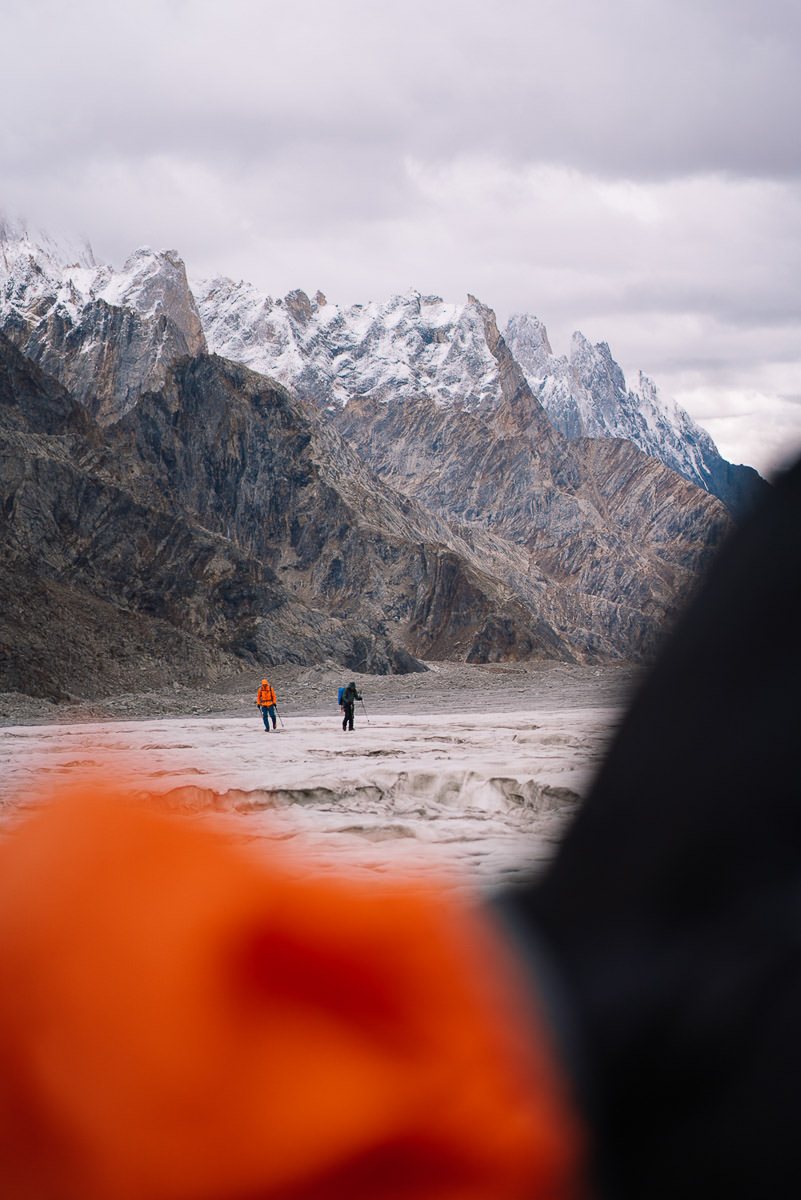


The day had finally arrived. We woke early aiming to leave during sunrise to cross the Hispar La. While the journey was not a great distance, we knew it would be a long day. Due to bad weather, the porters requested to leave an hour or so later. The weather didn’t improve and this would end up being a bad decision causing us to arrive to camp in the dark on the other side of the pass.
We roped up in our individual groups and began the march up the pass. Deep snow, often hip high, slowed us to a crawl as we took a few hours just to reach the top of the pass. Atop the pass, a wide plateau became difficult to navigate while in a complete whiteout. Despite being asked to lead the way and break the trail, a group of rogue porters and porter managers decided they didn’t like our route and set off on their own, often unroped. These are the kind of ‘workshops’ or debacles that I’ve come to expect when trekking in Pakistan. Things rarely run smoothly.

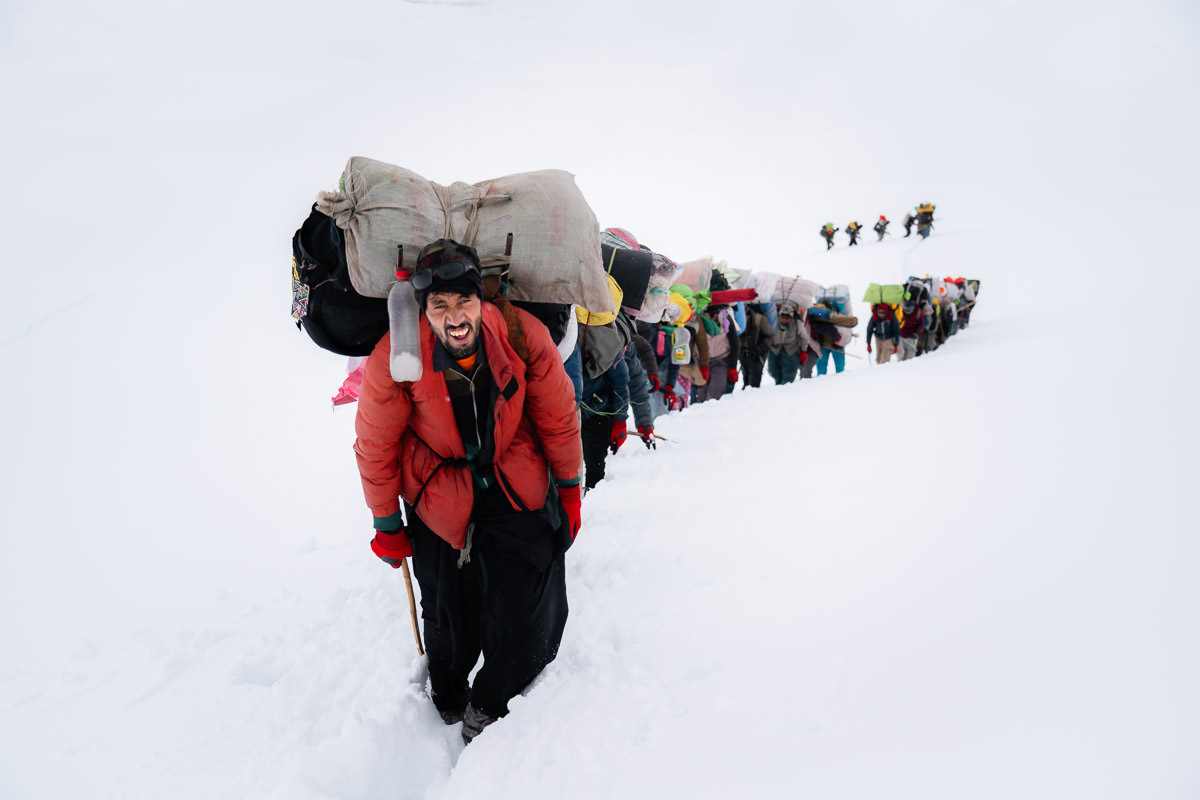



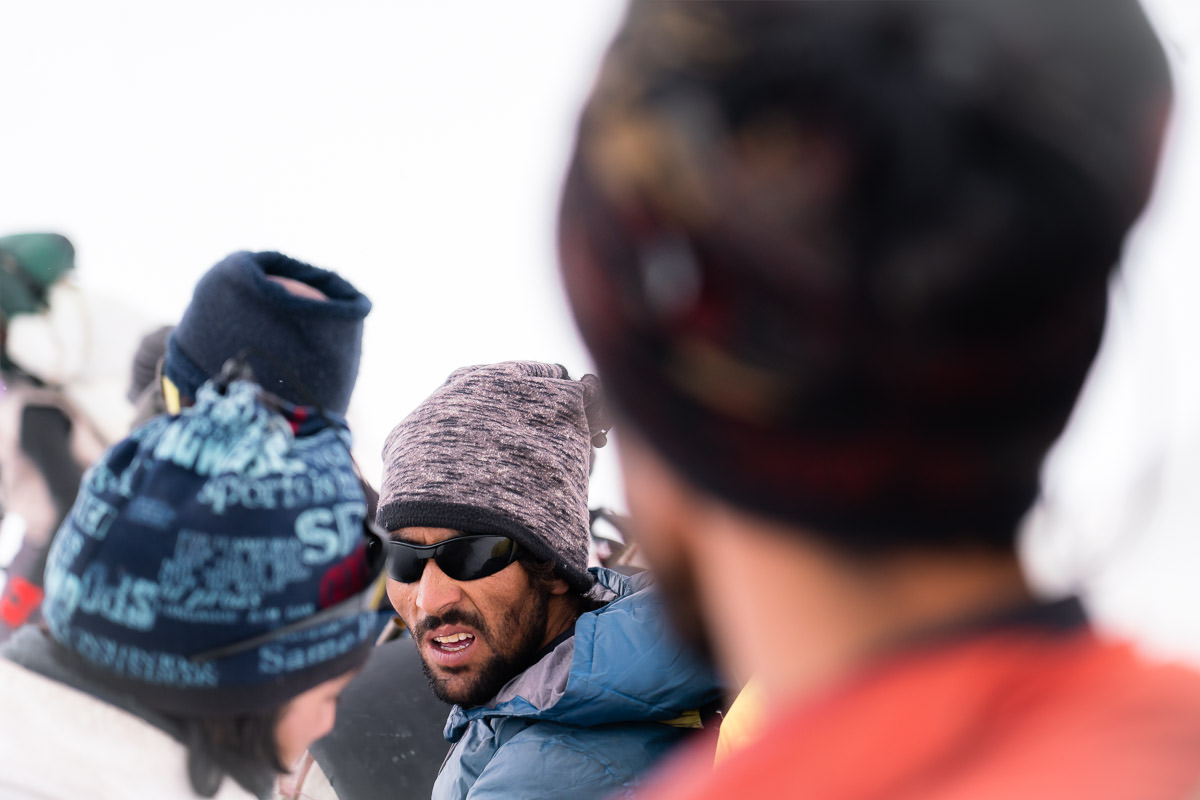
Luckily, none of our team had an issues with the constant danger of the crevasses and we managed to survive the day. It wasn’t in the safest fashion possible but that’s how it is in Pakistan. It’s the Wild Wild West sometimes.
On the slope down from the pass towards the Hispar Glacier, we encountered an endless stretch of deep crevasses. This was hard to navigate and the winding approach made our progress slow. We managed to survive our way down to the Hispar Glacier and make our way into camp just as nightfall approached. The slower members of our team arrived in the dark, dangerosuly navigated the cliff-side trails on loose rock in difficult, rainy conditions.


That was the drama of the trek over. We now just had to make the 3-4 day descent down to Hispar Village along the Hispar Glacier. The terrain is rough with lots of undulation over loose rocks. Long days of 20km+ on this type of challenging terrain is draining but the motivation to complete the route was ever strong.
The scenery was beautiful and we received some of the best weather over this period during the descent. We saw our first clear sunset, admired the peaks and even had an afternoon of warm sun to dry out our wet, musty gear.
These were the days we could revel in our success. We were the first teamand only team out of twenty five to make the crossing from Biafo to Hispar that season. It was a tired group but a proud one.





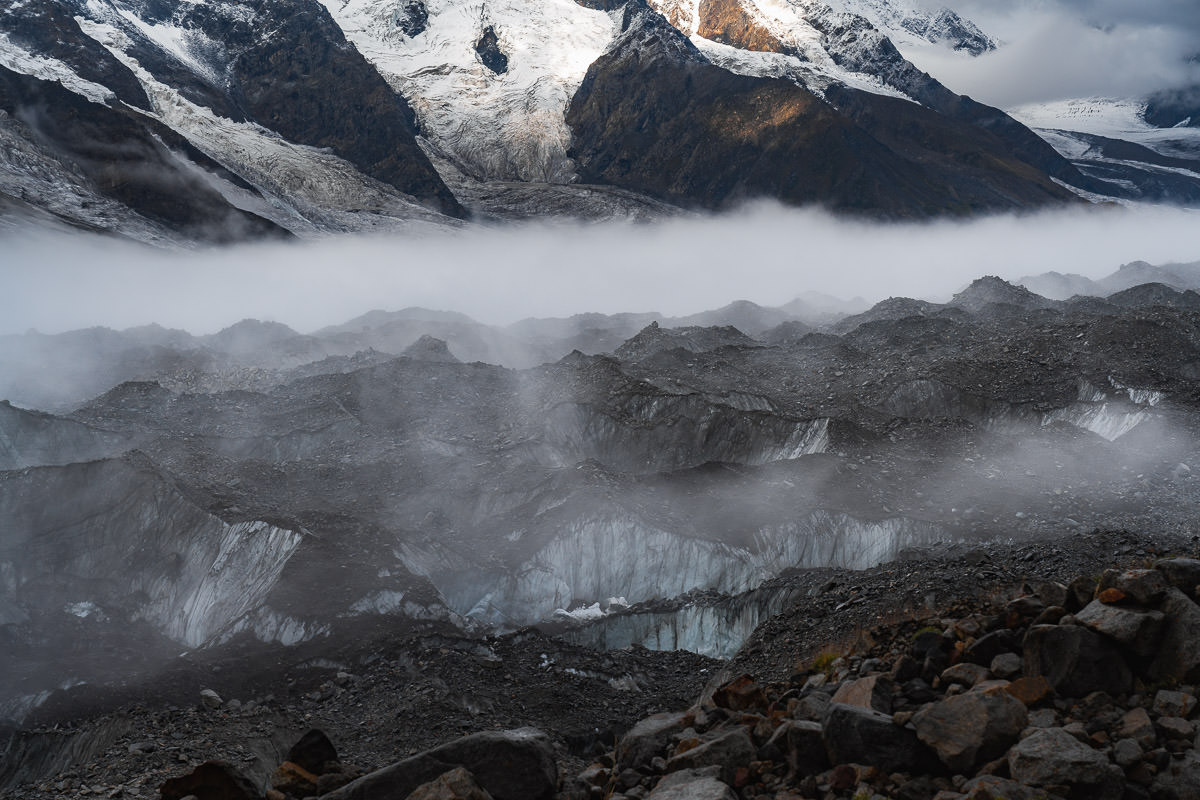





After a long couple of weeks, we though our adventure was over when we finally reached Hispar. A series of rockfalls had seriously damaged the road beyond repair out from Hispar. We loaded up in Jeeps and a couple of tractors to try and fix the damage. We patched up several spots on the road taking more than an hour to rebuild meters of road in one section. However, we reached some blockages to big to fix by hand. Dynamite or heavy machinery would be needed.
Thinking quickly, we asked the locals to ferry us out on motorbikes one by one. This was by far te sketchiest drive of my life. Bumpy, rocky and very narrow. I often looked over my shoulder to the left at the 100 meter drop below me. I said to myself just hold on, it’s not your time to go yet! We all sruvived although a few members did come off the bike and draw blood.






Surely the adventure ends there. Not in Pakistan. The bridge had been broken. There was no other way out. Luckily it was being repaired right when we arrived. By repaired, I mean completely rebuilt by hand. The team finsihed it in time for us to cross in the dark and call for Jeeps on the other side to pick us up. Finally at 9pm we made it to Hunza for a well earned meal back in civilization.



I hope you enjoyed this guide and recap for the Snow Lake Trek in Pakistan.

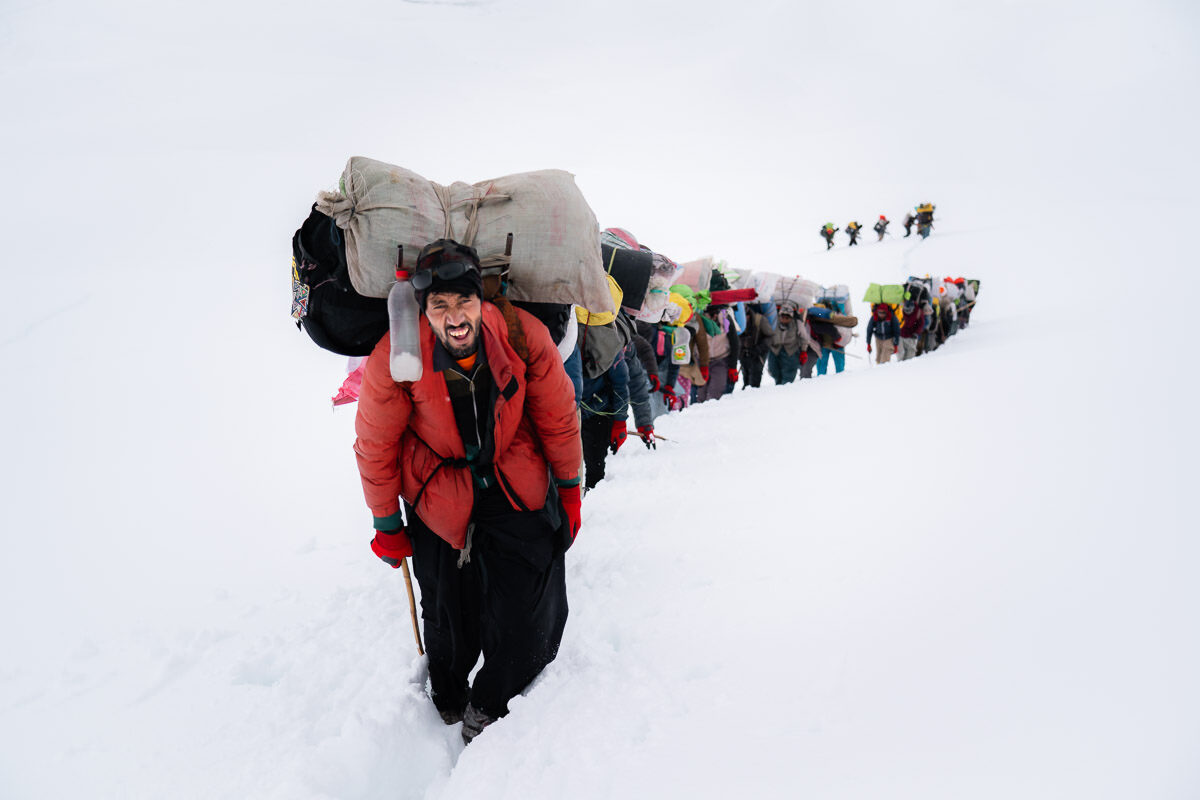
Wednesday 23rd of August 2023
You write it very well. This trek is realy breathtaking
Rutaba
Friday 20th of January 2023
Beautiful. so beautiful that I wanna do this.
Chris
Tuesday 15th of November 2022
Was a great journey bro! Great article as always. Stoked for the next one.